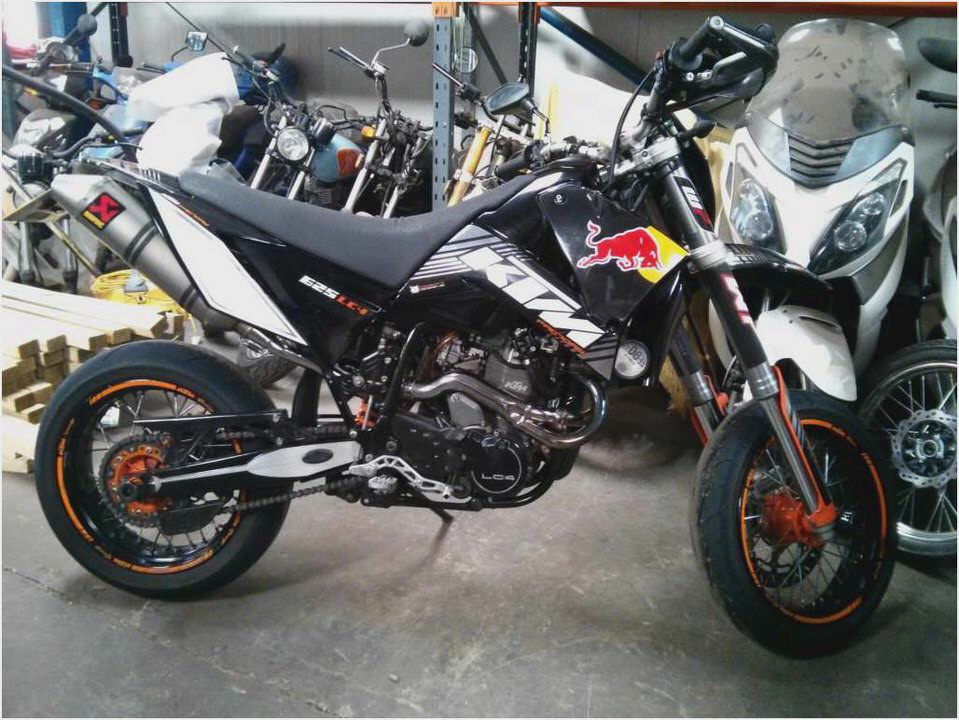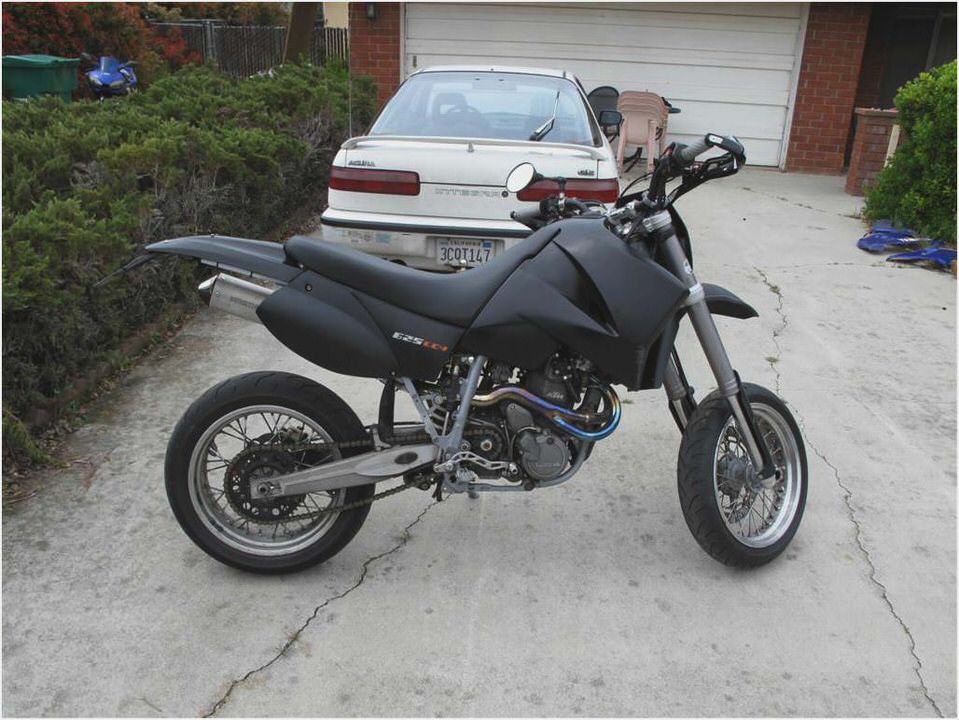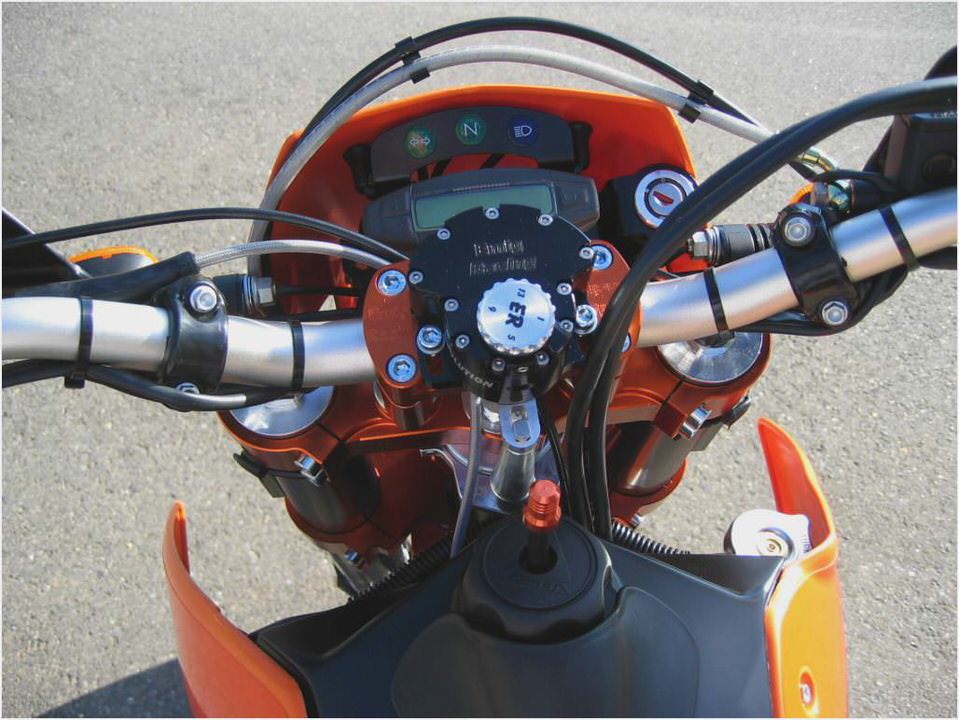
KTM 625 SMC Vs. Suzuki dr-Z400SM
Tried supermoto yet? It rocks! Trouble is, until recently there’s been no easy or affordable way to get into this fast-growing niche. You either wrote a fat check for a purpose-built European competition machine or spent long nights in the garage converting a Japanese motocrosser yourself.
The situation has taken a turn for the better in recent years, however, with the introduction of street-legal supermoto models from KTM and Suzuki.
No newcomer to single-cylinder streetbikes, KTM has offered a variety of dual-sport machines since 1994 and its supermoto-inspired Duke range since ’96. But it wasn’t until ’04 that the Austrian firm introduced a proper street-legal supermoto model. Essentially an RXC dual-sport with 17-inch street tires, a larger-diameter front brake rotor and dual underseat mufflers, the 625 SMC is based on the 50-horsepower LC4 engine that’s powered KTM thumpers since the late ’80s.
As such, it’s a generation behind the latest KTM Racing four-strokes, and it feels like it. Mind you, those bikes aren’t street-legal.
In a word, the KTM is different. Riders coming from European iron will feel right at home, but those coming from Japanese hardware will find the bike rather peculiar. Start with the switchgear: The left-side handlebar cluster has two rocker switches, the lower one activating the turn signals and the upper one the headlight; confuse the two and you could find yourself riding in pitch black.
Further complicating matters are the two buttons on the backside of the upper switch, one actuating the horn and the other killing the engine. Again, you do not want to confuse the two. The enduro-derived instrumentation also takes some getting used to.
Although the KTM has a left-side kickstarter, it also has an electric leg-so you’ll only have to kick it if you kill the battery. Quaintly carbureted rather than fuel injected, it still has a manual choke lever and a petcock. Remember those?
Toggle the kill switch to Run, push the starter button and the engine turns over a few times before settling into a coarse idle. Owing to the lean EPA jetting in the 41mm Keihin carb, the 625cc SOHC single is exceedingly cold-blooded. We had to raise the idle rpm while the engine was cold and then lower it after it warmed.
With its hydraulically actuated clutch and strong low-end power, the 625 lunges from a standstill; take care not to give it too much throttle unless you want to wheelie. Throttle response is generally good, but it’s a bit sluggish at low rpm and there’s a noticeable flat spot in the midrange. Raising the carburetor needle by lowering the clip one position helped some.
The large gaps between gears are obvious at every upshift, a side effect of the five-speed transmission and tall final gearing. An overdrive sixth would be nice, but that would mean narrower, weaker gears and/or wider crankcases, neither of which would be acceptable.
Counterbalancer or no, the LC4 is a shaker, the vibes worsening right about the time it starts to make good power. Extended freeway cruising will shake loose change from your pockets, the contacts out of your eyes and possibly the fillings from your teeth. The upright seating position is roomy, but the suspension is stiff and the saddle hard; extended romps will make you feel like you just got back from Brokeback Mountain.
With its wire wheels shod with aggressive Pirelli MT60 tires, the KTM handles well on street and dirt, its light steering seemingly contradicting its stable overall feel. Our main performance complaint had to do with excessive engine braking, which made the rear tire chatter during downshifts and when backing it into corners; a little clutch slippage works wonders here.
The 625 comes standard with a quality Magura tapered handlebar and black plastic handguards that help ward off car mirrors and protect the levers in tipovers. And given the sorts of antics the SMC invites, you will tip over. License plate notwithstanding, it is a dirtbike, after all.
Compared to the KTM, the Suzuki feels much more refined. It’s based on the 35-horsepower DR-Z400S dual-sport bike that’s been widely available since 2000, upgraded with supermoto wheels and brakes plus an aluminum swingarm, fully adjustable shock and the stiffer inverted fork from an RM250 motocrosser. In spite of its off-road heritage, the 400 is equipped with switchgear that feels much more normal to street riders, though the digital dash is capable of some bizarre enduro-specific functions such as counting down the mileage to a checkpoint.
Like the KTM, the Suzook’s 398cc DOHC single is carbureted, hence the petcock and choke lever. There is no kickstarter. Kill the battery and you’ll have to bump-start it. The 36mm Mikuni carb is jetted lean, so the SM takes eons to warm up.
Its needle has only one clip position, so raising it entails shims or installing an after-market kit.
Given its relative lack of power, leaving a stoplight on the DR-Z is a no-brainer. Just dial in some throttle and ease out the cable-actuated clutch; it won’t wheelie unless you pin it and dump it. Shifts come quicker than on the 625, but not as quickly as you’d suspect because the smaller motor revs higher.
That said, it’s amusing to catch third crossing an intersection or arrive at the end of a freeway on-ramp and discover you’re already in fifth. More so even than on the KTM, a sixth gear would be a plus. On the flipside, the Suzuki downshifts smoothly and doesn’t chatter when you back it into corners, which is about the most fun thing you can do on a supermoto bike.
Where the KTM vibrates, the DR-Z tingles-choose your buzz. Ride it at 70-mph-plus for any length of time and the numbness creeps up from your fingertips, through your forearms and up to your shoulders. We didn’t ride it long enough to numb our brains.
Hold the throttle to the stop and the speedometer needle will eventually flirt with 100 mph, 10 or so less than on the 625.
Although it’s physically smaller and 18 pounds lighter than the KTM, the DR-Z accommodates taller riders well, even if heavier folks will feel the seat base through the soft foam. Shorter pilots might be intimidated by the 35-inch seat height, but the bike is so slim and the suspension so soft they’ll likely have less trouble getting a foot down than on a lower, wider, firmer machine. In fact, the Suzuki would make an excellent beginner’s bike, especially for someone coming from off-road.
Speaking of which, the good Doctor Z is equipped with Dunlop D208 Sportmax radials that are virtually useless in the dirt-we’d take a tire groover to them or spoon on a different set before tackling a fire road. We’d also raise the shift lever one spline if we were wearing moto-boots. Lastly, we’d consider adding a set of handguards and some decent handlebars, because the bike is sold with a set of el cheapo mild-steel bars that are easily bent.
That’s OK, though, because given the Suzuki’s $6199 asking price-some $2400 less than the KTM-there will be plenty of money left over to spend on upgrades.
Experienced riders looking for a high-performance, street-legal supermoto bike will naturally be drawn to the 625 SMC, and rightly so. But for everyone else, the DR-Z400SM is the one to have. It’s hard to believe having this much fun is legal.



- Orange Hooligan – Revisiting the KTM Duke 690 III Bikes Republic
- KTM 560 SMR street legal plated in NY
- The Dirt Bike Guy: 2013 KTM 250 SX-F TwoWheelMania
- 2009 KTM 450 & 505 SX Review
- KTM 990 SM T ABS Ash On Bikes

